We firmly believe that you will greatly enjoy perusing the articles contained within this compilation pertaining to 5 Indigenous Hawaiian Species. It was certainly a pleasure for us to put it together for you. May it serve to edify and enlighten you about their wonders.
Obviously, however, these forms of life represent only the tiniest handful of the biological marvels native to this region. These appear both on the land itself, and the immediately surrounding waters. Read on to discover and explore the wonders of these islands.
Kauai hau kuchiwi
Kauai hau kuahiwi Facts
- Leading off this article about 5 Indigenous Hawaiian Species comes the breathtaking flora with the hard to pronounce native language name of Kauai hau kuahiwi.
- The hard to pronouce term for this flora variety serves as the common name for a beautiful variety of flowering plant in the mallow family. The common name for the plant comes directly from the native languge of the local Indigenous Peoples.
- Although this term may be difficult for the majority of people to pronounce, it’s likely more easily pronounced than its formal name. That’s because the official scientific term for his fascinting species is the tongue-twisting term of Hibiscadelphus distans.
- It’s also known sometimes as simply the hau kuahiwi. Presently, this wonder of Nature has no accepted common name in any other language. Regardless of which term one uses to refer to it, however, it remains a highly fascinating, and quite lovely, plant.
- Amazingly, the first known official recognition of it as a separate and distinct species did not occur until the year 1973. This scintifically noteworthy event represented the combined accomplishment of 2 researchers, L. Earl Bishop, and Derral Herbst.
- Sadly, though, the remarkable Kauai hau kuahiwi remains an extremely rare species within its native range. Due to this, the IUCN currently lists it as Critically Endangered. That listing appears on the organization’s published Red List of Threatened Species.
- Given the precariousness of its situation, it naturally faces many threats to its continued existence. Obviously, any amount of habitat loss poses a danger to it. Its greatest threat, however, likely comes in the form of the effects of climate change.
Kauai hau kuahiwi Physical Description
The marvelous Angiosperm known as the Kauai hau kuahiwi impresses those who know of it for reasons other than sheer size. That’s due to the fact that it’s also quite versatile in terms of its own shape. That’s because the plant appears as both a small tree and a shrub.
The maximum measured height of any individual specimen measured roughly 16 ft (5 m). Most of the other known trees of this species actually attained a much smaller height. The variations appear to depend upon local conditions for each individual example.
The bark of this tree also holds its own distinctive visual appeal. That holds true due to the fact that, both on the slim trunk and the numerous limbs, these typically possess a smooth texture. Mature specimens further generally develop a very well-rounded crown.
That foliage itself has a marvelous and distinctive nature. The leaves of the plant typically develop in a heart-shaped pattern. These further average between 1.6 – 3.9 in (4 – 10 cm) in length. Each also displays rounded serrations, as well as star-shaped hairs underneath.
The flowers of the Kauai hau kuahiwi also hold a unique appeal. These average 1.2 – 1.6 in (3 – 4 cm) in length. They’re also surrounded by small triangular structures. The perals begin life with a greenish yellow color. That, however, slowly changes to maroon shade over time.
- Kingdom: Plantae
- Phylum: Angiosperm
- Class: Eudicots
- Order: Malvales
- Family: Malvaceae
- Genus: Hibiscadelphus
- Species: H. distans
Kauai hau kuahiwi Distribution, Habitat, and Ecology
Regrettably, the known area of habitation for the Kauai hau kuahiwi remains extremely limited. In point of fact, it only appears on a single island. More precisely, the plant only lives on the island of Kauaʻi in Hawaii, which forms part of the country of the United States.
Even there, however, the beautiful Angiosperm only inhabits a tiny section of the island. In fact, to the knowledge of researchers, only two naturally occuring concentrations of the species exist. Both of these, furthermore, appear in the Pu’u Ka Pele Forest Reserve.
Both populations also appear in one, somewhat rugged area there. That’s because the groupings inhabit the Lower Koaiʻe Canyon area. These populations consist of only 20 wild specimens, along with another 120 that have been reintroduced to the region.
Each of the concentrations also appear at either low or middle elevations. All known specimens inhabit an altitude that ranges between 1,000 – 1,800 ft (300 – 550 m) above sea level. These examples further live in the greatly eroded remains of dry, native forests.
The plant seems to have adapted to very steady environmental conditions, as well. The mean temperature where it lives only ranges between 65.3 -78.3 F (18.5 to 25.7 C). This rare plant also seems to require very dry, crumbly soil, overlaying basaltic bedrock.
Unfortunately, a landslide destroyed one previously known population of the Kauai hau kuahiwi 1989. Yet another grouping was completely destroyed in 1992, by the effects of Hurricane Iniki. Thankfully, two botanical gardens now cultivate the plant, though.
Sculptured Mitten Lobster
Sculptured Mitten Lobster Facts
- Appearing in the second spot in this listing of 5 Indigenous Hawaiian Species we present the intriguing invertebrate known as the Sculptured Mitten Lobster.
- This beguiling sea creature most frequently goes by this unique but imaginatively descriptive name. This marvel of Nature also holds several other, though less frequently employed, non-technical names, however. None are quite so illustrative, though.
- These include such terms as the similar term sculptured slipper lobster, in english. In the native language of the local Indigenous Peoples, though, it has two names. That’s because, in their tongue, they refer to it as either the ula-pehu or the ula-pápapa.
- Professionals, meanwhile, typically refer to this Arthropod by its formal, scientific name. That, however, like so many others, remains quite hard to pronounce. This holds true due to the fact that its technical name is that of the Parribacus antarcticus.
- The first formal recognition of this wonder of evolutionary processes, however actually took place back in the year 1793. This scientifically noteworthy accomplishment further occurred due to the efforts of the respected Danish zoologist,Niels Tønder Lund.
- Thankfully, the crustacean seems to be maintaining a population base that’s both sizeable and sufficient. This further appears to hold true throughout the entirety of its natural range. The IUCN, therefore, currently lists it as Least Concern on its Red List.
- The Sculptured Mitten Lobster nevertheless must be considered to facing some potential threats to its existence. Habitat degradation and loss due to human activities pose possible dangers to it. Its greatest threat though likely consists of climate change.
Sculptured Mitten Lobster Physical Description
Although the magnificent Sculptured Mitten Lobster certainly merits attention and appreciation, it does so for reasons other than sheer physical seize. That’s because, despite its undeniably intriguing appearance, it remains a relatively small varity of lobster.
Much like most of its relatives, furthermore, it does display the physiological characteristic of sexual dimorphism. In its specific case, however, this trait remains extremely minor. Specifically, males attain a larger average size than females, but only just slightly.
Overall, though, mature individuals reach an average body length of roughly 4.7 – 5.9 in (12 – 15 cm). Exceptional specimens do occasionally appear, though, Yet even these rare giants of their kind never exceed 7.9 in (20 cm) to the knowledge of researchers.
The general body shape of this remarkable Decapod typically develops as relatively flattened. This further manifests a comparatively dense covering of hairs and tubercules on the dorsal section. The abdominal section, though, displays only a few of these.
Color patterns among mature specimens of the Sculptured Mitten Lobster, however, vary significantly between individuals. Certain patterns nonetheless predominate. Most present backgrounds of yellowish-red or greenish shades, with brown or black mottling.
- Kingdom: Animalia
- Phylum: Arthropoda
- Class: Malacostraca
- Order: Decapoda
- Family: Scyllaridae
- Genus: Parribacus
- Species: P. antarcticus
Sculptured Mitten Lobster Distribution, Habitat, and Ecology
Fortunately, both for the Sculptured Mitten Lobster itself, and those of us who appreciate nature, it evolved as native to a relatively broad swather of the globe. That’s due to the fact that it appears in a range than includes much of the Western Pacific, and the Indian Ocean.
More precisely, individuals live in a zone that extends as far west as the state of Florida, in the United States, in North America. From there, that range extends to northern Brazil, the southern coast of Africa, all the way to Hawaii, in the South Pacific Ocean.
Its own nature, in terms of habitat preference, though, severely limits its possible zones of habitation. That’s because this remarkable crustacean also evolved as a primarily bottom-dwelling species. In that regard, it mirrors the great majority of its kindred.
It further only makes its home within a very small, precise range of depths. Individuals only live in the extremely shallow regions, extending to no more than 65.6 ft (20m) in depth. The animal further prefers coral or stone reefs or lagoons, usually with a sandy bottom.
The marvelous Sculptured Mitten Lobster, again, like its kindred, evolved as a carnivore. In its case, its diet principally consists of the species that share its precise habitat zone. This, however, includes a variety of small shrimps, molluscs, crabs, and sea urchins.
The amazing Arthropod also evolved as a strictly nocturnal species, under normal conditions. Indivduals typically spend the majority of the day concealed under under large stone slabs, or ledges. It also quite often does so in small groups, being somewhat social.
Pritchardia kaalae
Pritchardia kaalae Facts
- Next up in this compendium of 5 Indigenous Hawaiian Species appears another flora, the fascinating species known as the Pritchardia kaalae.
- First of all, the somewhat hard to pronounce term for this amazing creation of evolution serves as the scientific name of a beautiful variety of palm tree. However, this marvel of Nature also goes by several common names in the area in which it appears.
- These alternate common names include such related terms as the Waianae Range pritchardia, the wahane, and the loulou palm. Regardless, of which term one uses to refer to it, though, this distinctive tree merits attention for several reasons.
- Firstly, the Pritchardia kaalae, ranking as a natural wonder, remains one of the rarest trees known to man. This holds true due to the fact that, as of the last official census, only 130 specimens existed in the wild. This census occurred in the year 1998.
- Secondly, partly due to its scant population, the IUCN lists it as Critically Endangered. This status is reflected on the organization’s Red List of Threatened Species. But, this status also holds true due to several other factors the tree currently faces.
- One of these threats occurs because wild rodents feast on the seeds before these can germinate. Another comes in the form of habitat loss, since its range is already limited. Nonetheless, the greatest threat it faces likely consists of climate change.
Pritchardia kaalae Physical Description
Although the Pritchardia kaalae never fails to impress those who see it, the plant does not do so due to sheer physical size. That’s true since the extremely rare tree ranks as somewhere between a small and average-sized type of palm tree, regardless of its other attributes.
In terms of height, mature specimens of this flora attain an average height of roughly 25 ft (7.6 m). Furthermore, the trunk of the impressive species remains comparatively quite narrow. This holds true because it only averages a diameter of about 1 ft (0.3 m).
Additionally, the foliage of the lovely Pritchardia kaalae presents itself in a manner generally consistent with related species. First of all, its fronds grow to a length of as much as 6.6 ft (2 m). Developing as quite stiff in nature, these also display a deep green color.
Nevertheless, the tree also remains unique among related species in its area for its blooms. That’s because these develop in large numbers, and display a bright yellow in color. Also, its distinctive fruit develops as a light green, and averages around 1 in (2.5 cm) in diameter.
- Kingdom: Plantae
- Phylum: Tracheophytes
- Class: Angiosperms
- Order: Arecales
- Family: Arecaceae
- Genus: Pritchardia
- Species: P. kaalae
Pritchardia kaalae Distribution, Habitat, and Ecology
Quite unfortunately, the truly magnificent Pritchardia kaalae apparently has an extremely limited range of habitation. That’s understandable given the fact that the fascinating plant only appears in one tiny region of the Northern Hemisphere.
More precisely, though, this range consists of only one of the islands comprising what’s known as the Hawaiian Islands, part of the United States. Specifically, this holds true due to the fact that the awesome palm tree only appears on the island of Oʻahu.
Furthermore, even within this already incredibly restricted range, it only appears in the western portion of the island. In point of fact, this remarkable plant only lives in the northern and northwestern parts of the Waianae Mountains.
Also, within this already severely restricted area, specimens live at altitudes up to 3,215 ft (980 m) above sea level. This remarkable variety of fora also only grows along exposed ridges, and in a few very small valleys, near springs, in the forested region.
Thankfully, however, the entirety of its known native range falls within the confines of the Makua Valley Military Reservation. This, combined with concerted conservation efforts, such as the Oahu Natural Resource Program, provide it some protection.
Sadly, though, the great majority of known specimens appear to be mature individuals. Regrettably, efforts to maintain the species out side of its area have met with only limited success. To date, its typical lifespan remains undetermined by researchers.
Hawaiian Monk Seal
Hawaiian Monk Seal Facts
- Our next choice for inclusion in this compilation detailing these 5 Indigenous Hawaiian Species comes the beautiful marine species, the Hawaiian Monk Seal.
- The informative term for this animal represents the common name for a particularly awesome species of earless seal. Its scientific name, meanwhile, remains that of the virtually unpronounceable, even for professionals, term Neomonachus schauinslandi.
- Its technical name may be almost impossible to remember, but certain facts about it remain nearly impossible to forget. One of those is the lamentable fact that this beautiful animal now forms one of only two remaining monk seal species.
- A third member of this grouping, named the Caribbean Monk Seal, now appears to be extinct. The first official recognition of this animal as a separate species occurred in the year 1899, at the hands of the German scientist, Hugo Schauinsland.
- Quite sadly, however, its population also appears to be in a steep decline. Current official estimates place its surviving numbers at roughly 1,400 individuals. As a result, the IUCN presently lists the Hawaiian Monk Seal as Endangered on its Red List.
- Since the creature inhabits a small, specific range, this number remains highly concerning. Potential habitat loss obviously forms a very serious concern. Its greatest threat, though, most likely comes in the form of the effects of climate change.
Hawaiian Monk Seal Physical Description
The beautiful Hawaiian Monk bears a strong resemblance to its cousins, but distinguishing characteristics do exist. It does, however, naturally share many of the same characteristics. Among these remains the fact that it displays a moderate degree of sexual dimorphism.
In the case of this particular animal, that trait manifests itself in terms of sheer physical size. Adult males of this incredible creature attain an average body length of roughly 7 ft (2.1 m). These also weigh an average of between 300 – 400 lb (140 – 180 kg).
The females of the species, though, generally reaches a somewhat larger size. Unlike the male, she typically grows to around 8 ft (2.4 m) in length. Her weight, meanwhile, usually averages significantly greater, measuring at around 400 – 600 lb (180 – 270 kg).
Otherwise, the two genders appear very much the same. This specific pinniped possesses an overall slender shape. The animal also has a comparatively small, flat-shaped head, with large black eyes. It further has a shorter snout than some related species.
In coloring, the magnificent Hawaiian Monk Seal generally presents an overall grayish color. This does, however, typically tend to be a darker shade on the upper side, and lighter on the lower side. This does often slowly change to a brownish as it ages.
- Kingdom: Animali
- Phylum: Chordata
- Class: Mammalia
- Order: Carnivora
- Family: Phocidae
- Genus: Neomonachus
- Species: N. schauinslandi
Hawaiian Monk Seal Distribution, Habitat, and Ecology
Like some species, the very name of the wonderful Hawaiian Monk Seal provides a significant clue to its habitat range. Understandably, then, this fabulous creature inhabits a very specific, and in some ways limited, portion of the oceans of the world.
As the name implies, this mammal inhabits the waters around what we now call the Hawaiian Islands. This location, part of the United States, also seems to be the only area in which it appears. For the moment, evidence indicates that it never lived anywhere else.
More specifically, the majority of individuals appear to be concentrated in two distinct groupings. One group lives around the main islands of the chain. The other, though, lives around the various small islets and atolls that lie northwest of those main islands.
Roughly two-thirds of the life of the animal is spent at sea. This area principally consists of moderate depths, though. Most commonly the animal spends much of its time at depths of 984 ft (300 m) or more. It usually only comes to land to sun itself or to breed.
Quite understandably, the gorgeous Hawaiian Monk Seal evolved as a carnivore. Its prey mainly includes a variety of bony fish species that live on or around reefs. It does, however, also consume a moderate amount of smaller cephalopods and crustaceans.
Yellow-Bellied Sea Snake
Yellow-Bellied Sea Snake Facts
- Closing out this article about these 5 Indigenous Hawaiian Species we present the only reptile on the list, the aptly-named Yellow-Bellied Sea Snake.
- The unusual, but descriptive, term for this particular animal serves as the most often used common name for this remarkable species of marine reptile. It also goes by another name, though. That’s the equally informative name of Pelagic Sea Snake.
- Scientific professionals, however, such as researchers, typically use its official scientific name to refer to it. That’s actually a relatively simple name, though, at least compared to many others. That’s because it bears the formal name of the Hydrophis platurus.
- It also holds a notable distinction, which it shares with a multitude of other species. That’s due to the origin of that technical name. The eminent zoologist, Carl Linnaeus made the first formal acknowledgement of it as a separate and distinct species in 1776.
- For the moment, the fabulous marine reptile also holds yet another distinction. It represents one of the minority of species across the globe that appears to be holding its own in the face of the ecological upheavals the world’s now experiencing.
- As a result, its population numbers seem to be maintaining a level that’s both stable and sufficient. That further appears to hold true throughout the entirety of its natural range. The IUCN, therefore, presently lists it as Least Concern on its Red List.
- The amazing product of Nature and evolution nevertheless does face some potential threats to its existence. Commerical fishing practices pose a danger, in the form of accidental bycatch. Its greatest threat, though, likely consists of climate change.
Yellow-Bellied Sea Snake Physical Description
The stunning Yellow-Bellied Sea Snake manages to fully impress those who encounter it wholly regardless of sheer physical size. That’s because it actually ranks as smaller than average among its peers. Most related species, in fact, attain much larger sizes.
Nature, however, gives little regard to such things. The magnificent product of evolution also displays a moderate degree of the physiological characteristic of sexual dimorphism. In its specific case, though, this trait manifests itself in terms of simple length of body.
More precisely, males of the species grow to about 80% of the length of their female counterparts. Males of the animal reach an average body length of roughly 28 in (72 cm). The females, meanwhile, typically attain lengths averaging approximately 35 in (88 cm).
Otherwise, though, the two genders develop as virtually indistinguishable in appearance. The body of the reptile develops a compressed, tapered shape. This thins to less than half the diameter of the neck. The head, however, remains narrow, with an elongated snout.
Yet it’s the color scheme of the amazing Yellow-Bellied Sea Snake that generally catches the eye. That pattern of coloring also obviously serves as the source of the common name. The belly of the snake usually presents a bright yellow, though rarely brown appears.
Colors of the upper body vary significantly, however. Most frequently, though, this consists of varying shades of black or very dark brown. Infrequently, a series of small black dots appears on the lighter background. A set of black bars also makes the rare appearance.
- Kingdom: Animalia
- Phylum: Chordata
- Class: Reptilia
- Order: Squamata
- Family: Elapidae
- Genus: Hydrophis
- Species: H. platurus
Yellow-Bellied Sea Snake Distribution, Habitat, and Ecology
Luckily, both for the Yellow-Bellied Sea Snake itself, and for those who appreciate Nature, it holds one the widest ranges of distribution of any snake on earth. The only warm ocean in which the marine animal does not appear to live in natively is the Atlantic Ocean.
Even there, though, it’s occasionally seen, due to human activities carrying individuals outside the normal range. It principally natively inhabits the warmer oceans throughout the world, except the Atlantic. It’s also the only sea snake to reach the Hawaiian Islands.
The intrepid reptile greatly expands its territorial options due to its own nature. That’s because it evolved as an entirely pelagic creature. It therefore inhabits the vast open regions of the ocean, typically, though not exclusively, far from any shore in the area.
It further shows a marked preference for regions of free-floating kelp. It’s perhaps most frequently seen off the coast of Australia. In all areas in which it appears, however, the wonder of the seas prefers the same type of environment in which to make its home.
The reason the Yellow-Bellied Sea Snake so often prefers to inhabit regions of kelp pertains to two facets of its biology. These regions serve it well for both hunting and reproduction. Many of its favorite prey frequent such regions, and it generally seeks its mate there.
As opposed to ancient beliefs, the animal does require fresh water for survival. Amazingly, however, it gathers most of this by drinking freshwater precipitation that gathers on the surface of the ocean. It also breeds in warm waters, bearing live young, usually in tidal pools.
5 Indigenous Hawaiian Species
We sincerely hope that you have thoroughly enjoyed reading, and hopefully learning from, this article about 5 Indigenous Hawaiian Species. It’s our further hope that doing so has left you with a new or renewed appreciation for the wonders of this region.
Unfortunately, many of the species living in this part of the world now find themselves facing dire threats. In this, they mirror the situation of countless forms of life around the globe. It’s up to each and every one of us to do all that we can to protect and preserve them.
Check out our other articles on 5 Befuddling Invertebrates of Borneo, Earth’s Countless Amazing Amphibians, 6 Mysterious Natural Phenomena, The Mighty Tornado
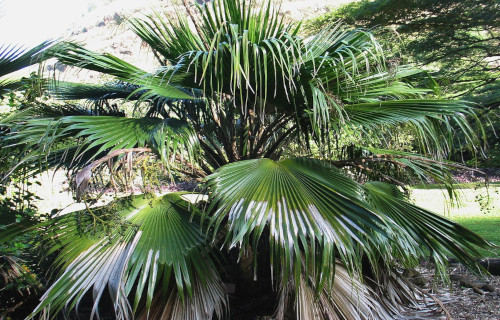
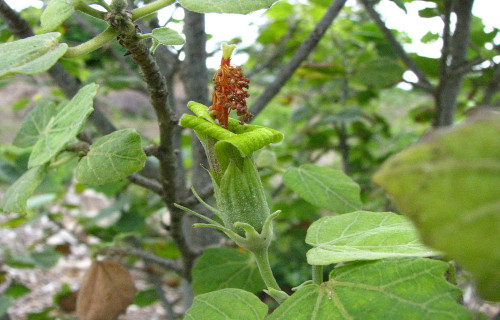
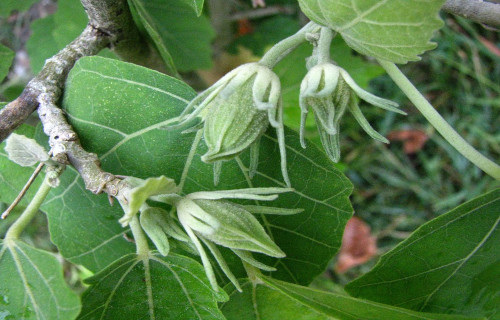
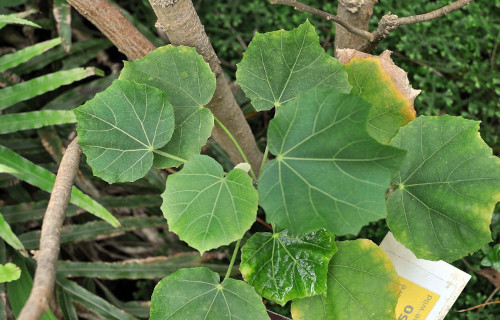
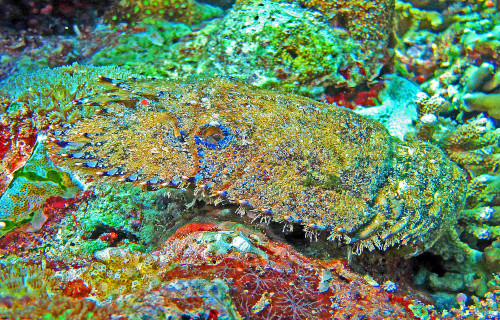
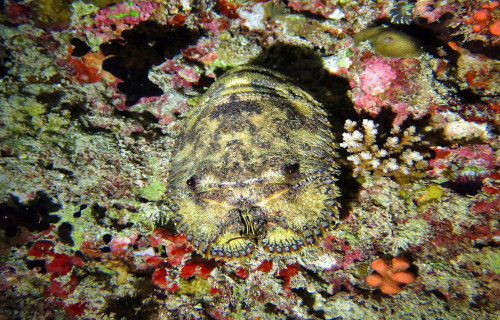
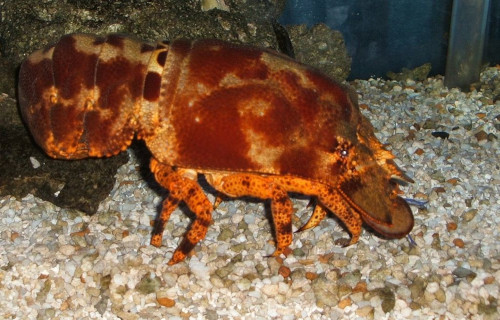
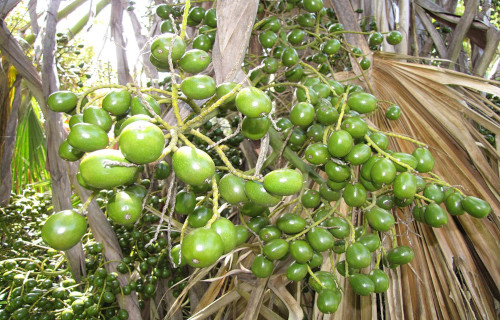
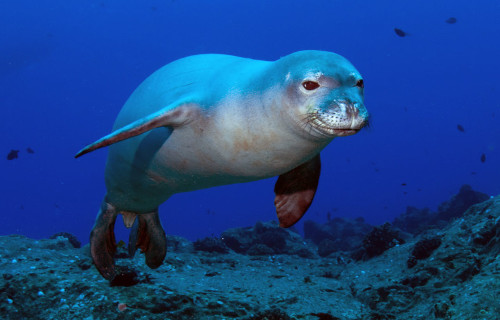
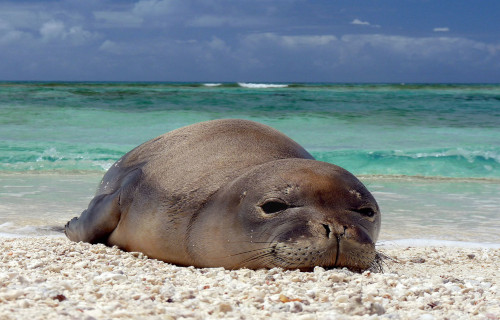
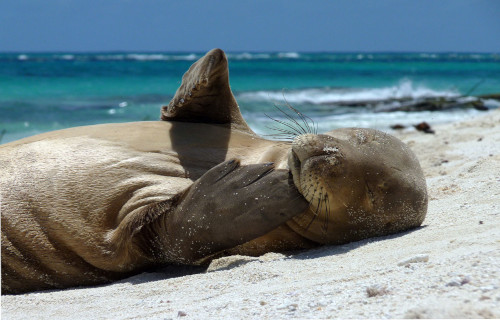
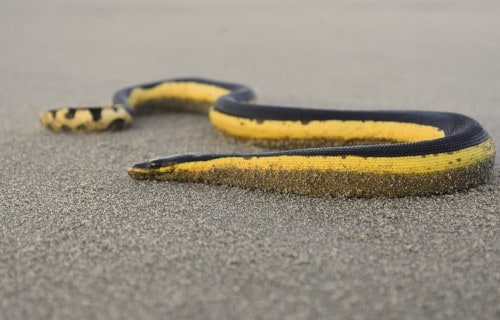
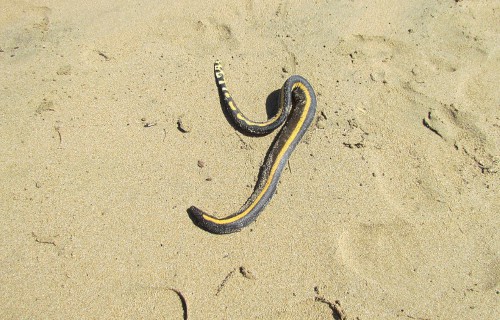
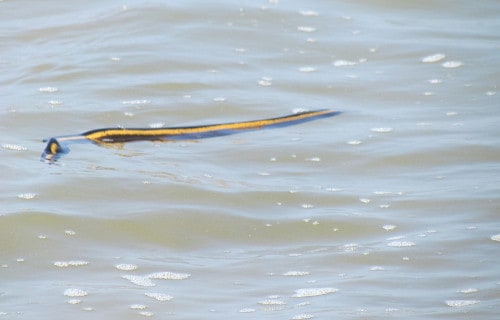









Leave a Reply